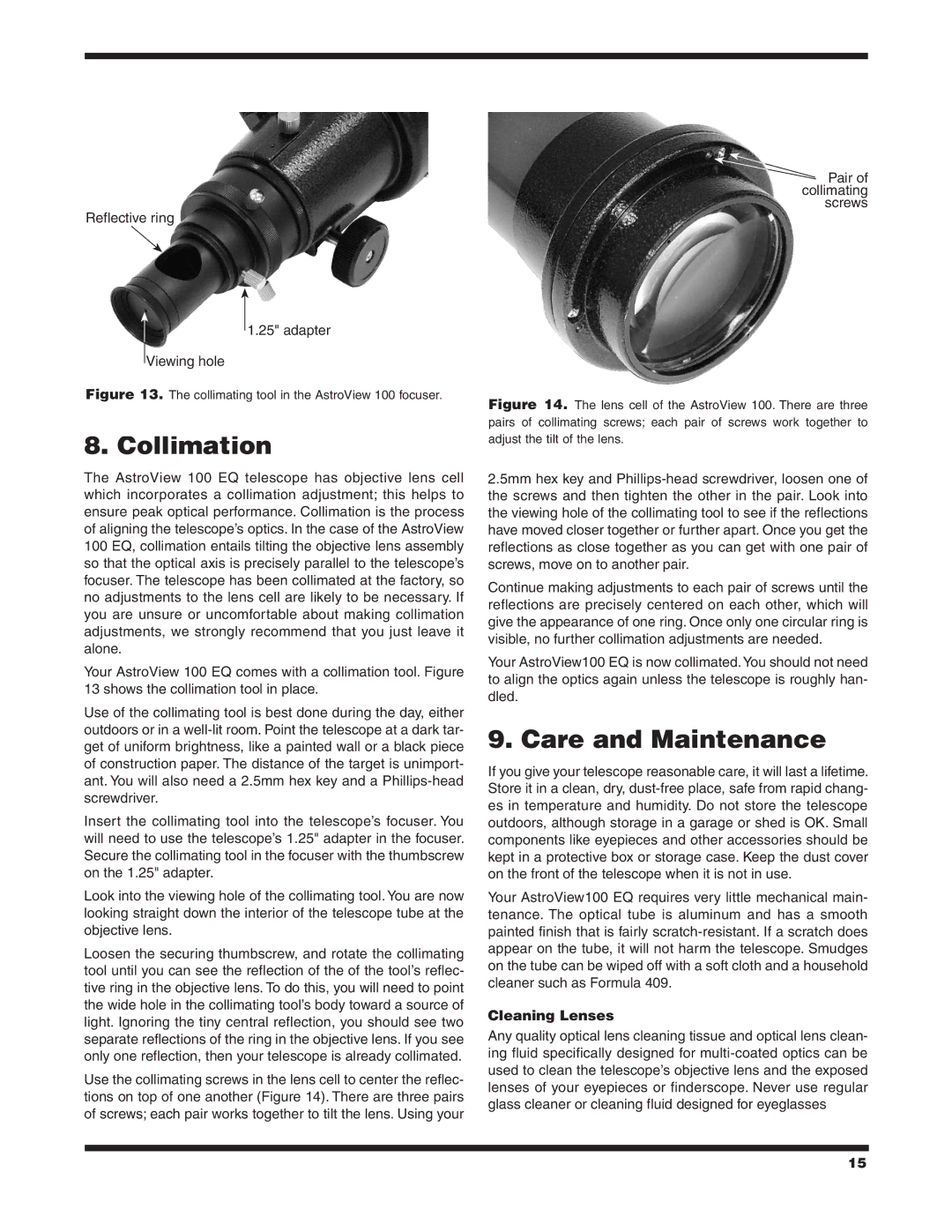
Reflective ring
1.25" adapter
Viewing hole
Figure 13. The collimating tool in the AstroView 100 focuser.
8. Collimation
The AstroView 100 EQ telescope has objective lens cell which incorporates a collimation adjustment; this helps to ensure peak optical performance. Collimation is the process of aligning the telescope’s optics. In the case of the AstroView 100 EQ, collimation entails tilting the objective lens assembly so that the optical axis is precisely parallel to the telescope’s focuser. The telescope has been collimated at the factory, so no adjustments to the lens cell are likely to be necessary. If you are unsure or uncomfortable about making collimation adjustments, we strongly recommend that you just leave it alone.
Your AstroView 100 EQ comes with a collimation tool. Figure 13 shows the collimation tool in place.
Use of the collimating tool is best done during the day, either outdoors or in a
Insert the collimating tool into the telescope’s focuser. You will need to use the telescope’s 1.25" adapter in the focuser. Secure the collimating tool in the focuser with the thumbscrew on the 1.25" adapter.
Look into the viewing hole of the collimating tool. You are now looking straight down the interior of the telescope tube at the objective lens.
Loosen the securing thumbscrew, and rotate the collimating tool until you can see the reflection of the of the tool’s reflec- tive ring in the objective lens. To do this, you will need to point the wide hole in the collimating tool’s body toward a source of light. Ignoring the tiny central reflection, you should see two separate reflections of the ring in the objective lens. If you see only one reflection, then your telescope is already collimated.
Use the collimating screws in the lens cell to center the reflec- tions on top of one another (Figure 14). There are three pairs of screws; each pair works together to tilt the lens. Using your
![]() Pair of collimating screws
Pair of collimating screws
Figure 14. The lens cell of the AstroView 100. There are three pairs of collimating screws; each pair of screws work together to adjust the tilt of the lens.
2.5mm hex key and
Continue making adjustments to each pair of screws until the reflections are precisely centered on each other, which will give the appearance of one ring. Once only one circular ring is visible, no further collimation adjustments are needed.
Your AstroView100 EQ is now collimated.You should not need to align the optics again unless the telescope is roughly han- dled.
9. Care and Maintenance
If you give your telescope reasonable care, it will last a lifetime. Store it in a clean, dry,
Your AstroView100 EQ requires very little mechanical main- tenance. The optical tube is aluminum and has a smooth painted finish that is fairly
Cleaning Lenses
Any quality optical lens cleaning tissue and optical lens clean- ing fluid specifically designed for
15
